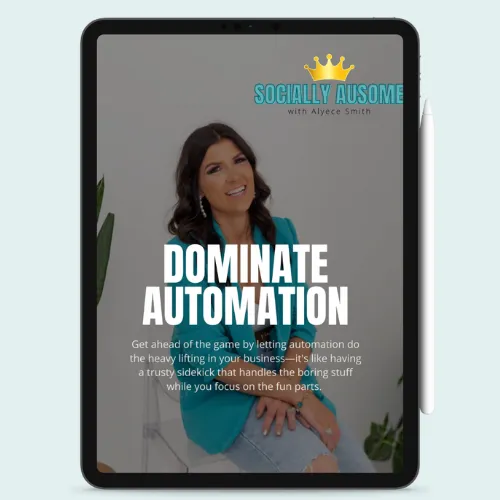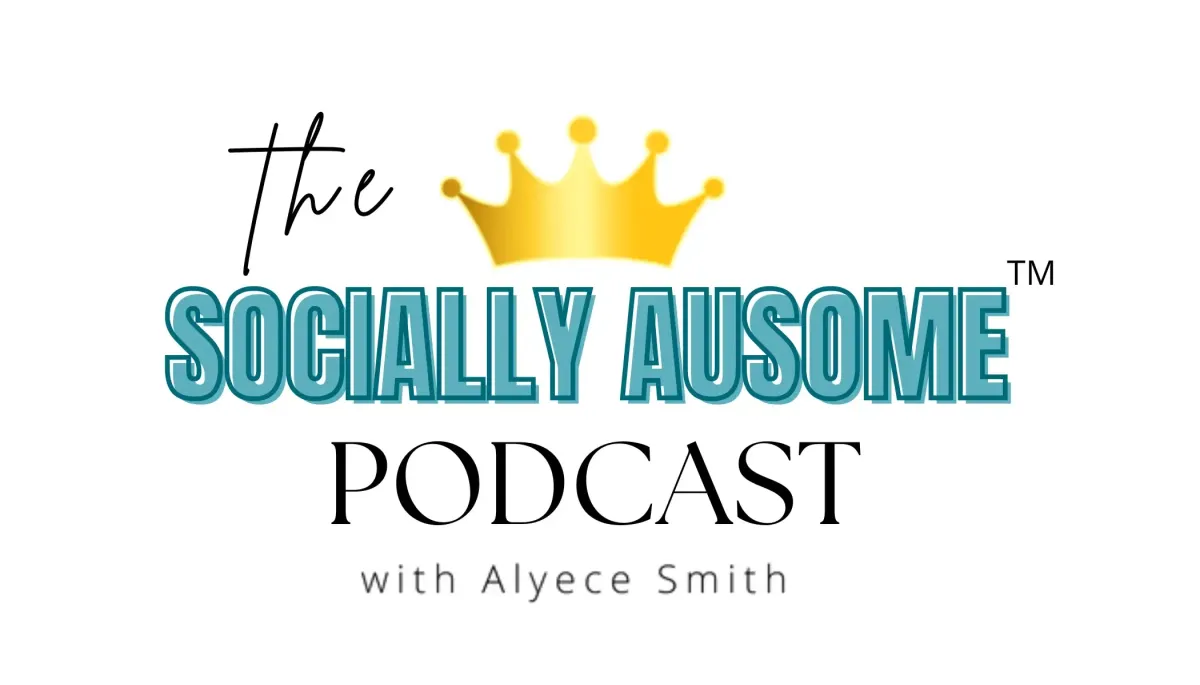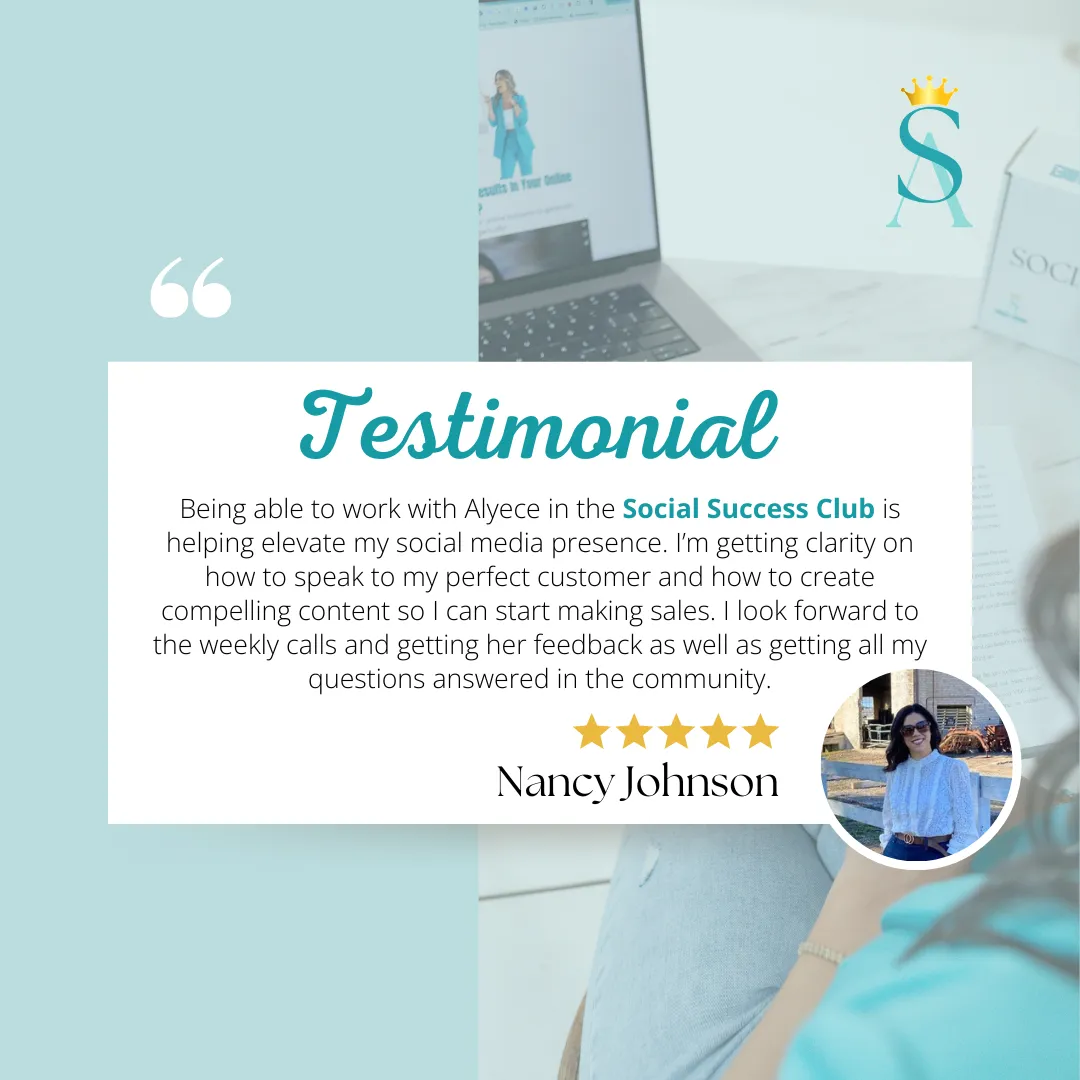
You’re Not Lazy. You’re an ADHD CEO Who Needs a Better System.
Business gets to feel FUN, friction-free, and profitable — without burnout.


FEATURED IN:

ADHD Business Coaching That Actually Works with Your Brain
You're ready to build a business online your way. You are ready to make your business feel SIMPLE, SOCIAL, AND AUSOME again.
Hey Heyyyy
I'm Alyece!
As an ADHD business coach and certified high-performance mentor, I help neurodivergent entrepreneurs simplify their systems, scale their income, and enjoy their business again—without burnout.
Traditional strategies don’t work for ADHD brains. That’s why I teach dopamine-driven business systems designed specifically for entrepreneurs who struggle with consistency, overwhelm, and shiny object syndrome.
Through my ADHDPRENEUR Academy™, Focused & Free Membership and private coaching, I support high-achieving ADHD CEOs in creating automation, attracting dream clients, and selling without exhausting launches or constant content.
If you’re tired of forcing yourself into neurotypical productivity and you’re ready to build a business that feels fun, friction-free, and profitable, you’re in the right place.





Sound Familiar?
🔄
You’ve started 7 ideas and finished none
😵💫
You’re overwhelmed by endless to-dos and tasks
🧨
You burn out before you even launch your offer
📉
Your income is unpredictable and you are second-guessing
🧠
Productivity hacks don’t work for your brain
🗣️
Your confidence is tanking because you aren't "consistent"

I'M HERE TO HELP ENTREPRENEURS
Build a Business That Works FOR Your Brain
ADHDPRENEUR Academy™ gives you everything you need to:
Create consistent $10K+ months.
Sell without draining launches or calls.
Run systems that work even on your “off days”.
Why My Method Works When Nothing Else Has...
No neurotypical BS.
Dopamine-driven, ADHD-tested.
Momentum without burnout
Simple, friction-free systems
Selling that feels good
"I really appreciated how honest you were about my content."
"You gave me really great direction on how I can create more compelling content. What I loved the most is that you didn't just say..."I would fix this/I would change this..." You gave me exact examples which is exactly what I was hoping for. Thank you!"
-Kaley Ram
GET SOME FREEBIES
To Get You Started...

Ideal Client Checklist
Speak to the people who are already ready to buy.

Sales Machine
Masterclass
Learn the dopamine-friendly system behind sales.

Dominate Automation
Discover how to sell even when you’re not online.

Your go-to show for no B.S. marketing strategies that actually work.

🎙️
Listen To The Podcast
New Episodes every Tuesday @ 8 A.M. CST
Your go-to show for high-achieving ADHD Entrepreneurs who are DONE forcing themselves into neurotypical business strategies that don't stick.
Every week we break down dopamine-driven sales, ADHD-proof business strategies, and real talk on scaling without burnout.
THE TIME IS NOW
Join Socially Ausome Entrepreneurs
The Socially Ausome Community is for ADHD entrepreneurs who are done trying to "push through" and are ready to build smart systems that work with their flow. Here’s what you’ll get:
✅ Actionable support that helps you move without overwhelm
✅ Strategy that simplifies—not piles on
✅ A space that gets how your brain works and sells anyway


I Only Send What Works. 📧
I’m not here to clog your inbox with fluff. Every email is packed with strategy, mini trainings, and message-shifting truth bombs that help you move the needle- fast.
Sociallyausome.com needs the information you provide us to contact you about our product and services. You may unsubscribe anytime. See our privacy policy for terms and conditions to learn how we protect your data.




